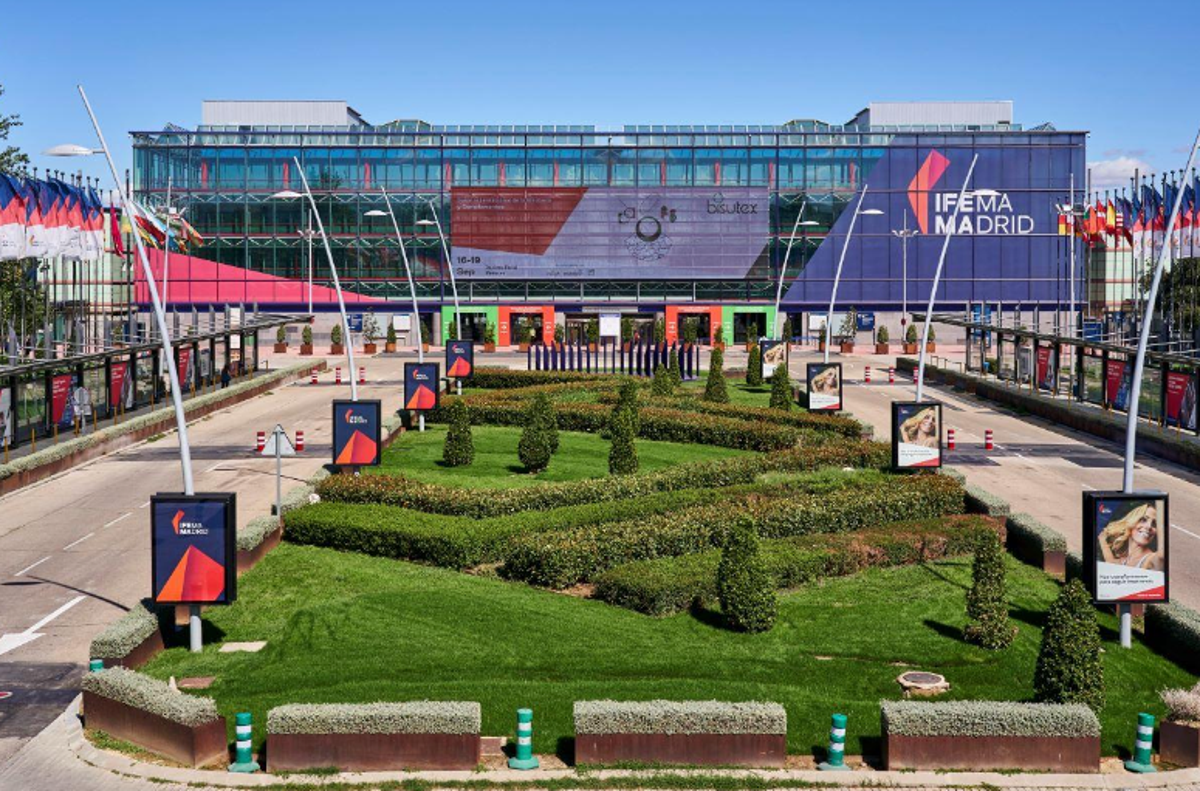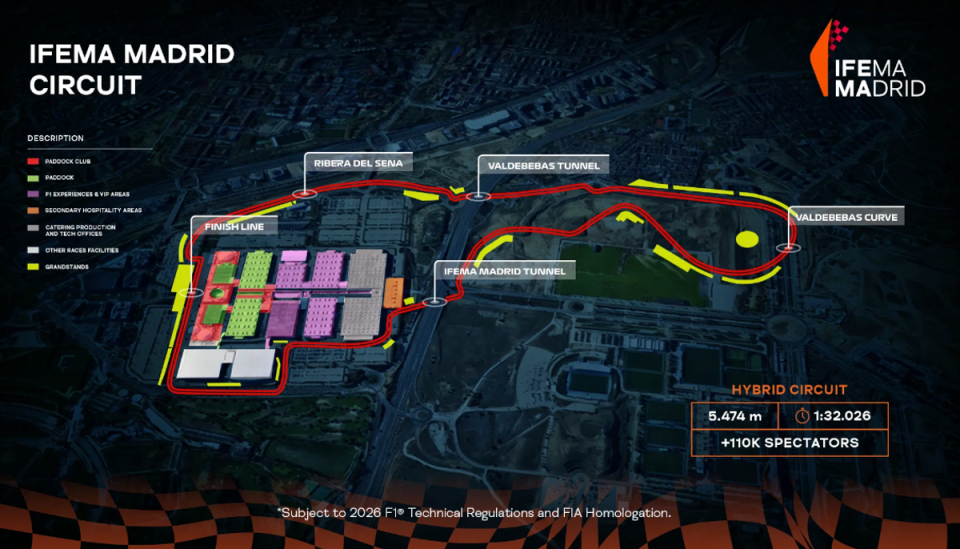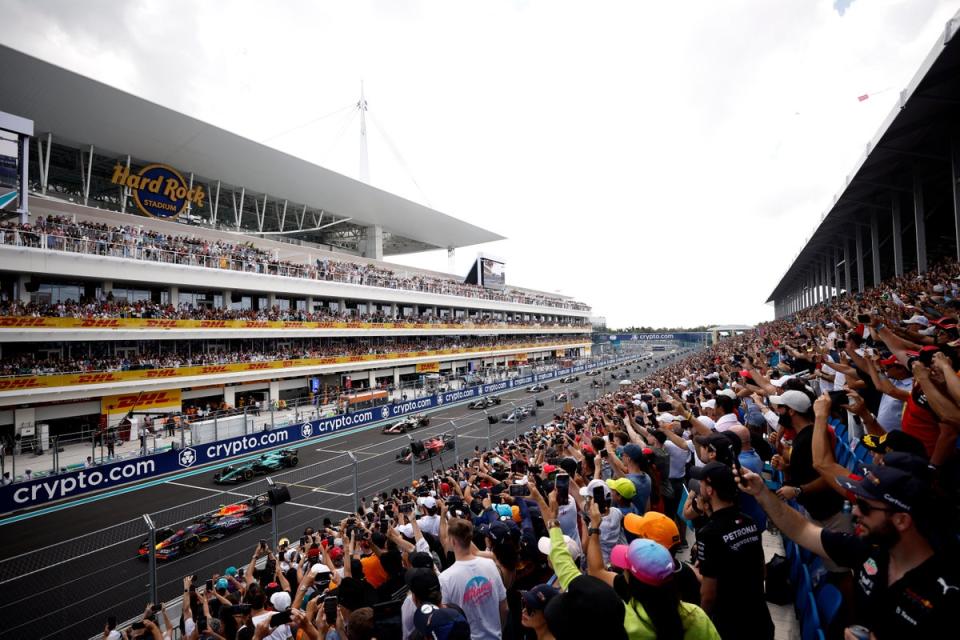F1’s Madrid street circuit places the spotlight on nine classic tracks

Formula 1 is descending rather unusually on a season of stark similarity in 2024. For the first time ever, there are no driver changes from the last race of 2023 in Abu Dhabi. This year’s Formula 1 calendar will also include no new tracks for the first time since 2019. In all likelihood, 2025 will be the same. Needless to say, in a time where F1 is looking to maximise every possible profit-making avenue amidst its worldwide Netflix-inspired boom, 2026 could not follow suit.
Tuesday’s news of Madrid replacing Barcelona as the host of the Spanish Grand Prix in two years has been in the works for some time. The IFEMA exhibition centre – where the new 20-corner circuit will be built around – hosted the inaugural F1 Exhibition last year to great acclaim, becoming the country’s biggest temporary show. It is an ambitious city, constantly in rivalry with Barcelona (have you heard of El Clasico?) and the home of popular Ferrari driver Carlos Sainz. Now, an opportunity to potentially replace Catalunya as the host of F1 in Spain was simply too appetising to pass up.
F1 were keen to stress, amid a plush launch at IFEMA which included the sport’s chief race-maker Stefano Domenicali, that Madrid’s addition does not categorically spell the end for Barcelona. The Circuit de Barcelona-Catalunya has hosted the Spanish GP since 1991 and used to be an annual base for pre-season testing. However, it has fallen decrepit in recent years.
While most F1 venues have moved with the times – replenishing and revitalising tracks as entertainment mega-hubs – Barcelona has not. The racing spectacle is also, despite a track layout change last year, regularly mediocre. F1 maintain that negotiations are ongoing but amid a busier schedule than ever before, with a record 24 races this year, can the sport really pop up twice-a-year in Spain?
The United States (Miami, Austin, Las Vegas) and Italy (Imola, Monza) host more than one race a year, but the market is intensely crowded. The house money is firmly on Madrid replacing Barcelona in the long term.
But the addition of another street circuit has at this stage lost the appeal and charm it used to have not so long ago. When Singapore became F1’s first night race in 2008, it was just the fourth street circuit on the calendar. In 2026 – with Baku, Jeddah, Miami and Vegas all being added in recent years – we will have nine street circuits compared to 15 traditional tracks, discounting Barcelona. The paradigm of the sport has unquestionably shifted to inter-city events much in the same manner as Formula E – and the jury is still very much out.
Does it actually make for better racing? While the new strip circuit in Vegas impressed on debut last November – notwithstanding the opening night controversy – the first two races in Miami have been drab affairs. The addition of a sprint event this year in Florida is undoubtedly a manoeuvre to improve the weekend experience. Saudi has been somewhat hit-and-miss in its three iterations, while Baku and Singapore have been entertaining but more so for safety car interventions and high-speed crashes, rather than any captivating on-track moves.


The addition of Madrid also seems slightly peculiar when F1’s next foray should be predominantly focused on the only continent they don’t race in: Africa. Lewis Hamilton and Max Verstappen have led calls for a race in South Africa, with the Kyalami circuit on the outskirts of Johannesburg mooted for a race as early as this year. However, issues with the long-term sustainability of the event following a change of promoter, as well as South Africa’s failure to condemn the actions of Vladimir Putin after Russia’s invasion of Ukraine, have put that on the backburner.
But amidst all the hullabaloo on Tuesday surrounding Madrid’s re-entrance into the sport – having hosted a race at Jarama outside the city in 1981 – one line on contract lengths from Domenicali hit home.
“I’m very pleased that it’s a deal that takes us to 2035 – and it’s a long time,” the F1 CEO said. “It gives everyone long-term visibility. If you look at the past, the renewals were two years, three years or five years maximum. Now all our new deals are going in the direction of being very long. And if they are short, there is a reason.”


He’s right. Those who have contracts into the next decade include Saudi, Miami and Qatar – all new races. However, what’s more interesting is the races which do not have long left on their deals.
Silverstone and Suzuka are due up this year, with Spa-Francorchamps, Monaco, Monza, Imola, Mexico City, Zandvoort and Shanghai all up for renewal in 2025. These traditional, cornerstone races – with some classic layouts synonymous with the history of the sport – are not ring-fenced. If terms are not agreed, with interest in hosting a race stretching to all corners of the world, they can be booted out.
And amid a schedule which – surely – cannot be cranked up much further, what will give way? Because it won’t be new venues, with bucketloads of cash to offer. The raw facts make it seem like it will be the likes of Silverstone, Spa and Monaco. For the avoidance of doubt, the future of the British Grand Prix is not thought to be in peril at this stage. Negotiations often take time and Silverstone has been a world-leader in staging both a racing and entertainment spectacle with mammoth capacities in recent years. The long-term health of Spa and Monaco, however, is much more precarious.
If they stay on, it will surely trigger too many races (more than 24 and executives will be receiving complaints from drivers and their teams) for the sport’s wide array of travelling circus to handle. It could stretch the sport to breaking point. Something, in some way, may well have to give.


